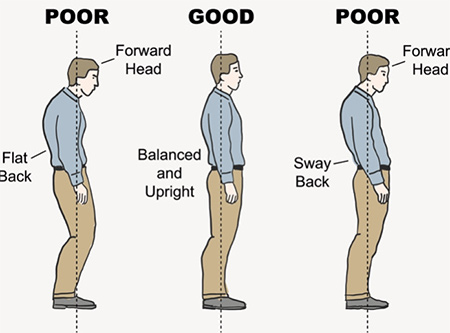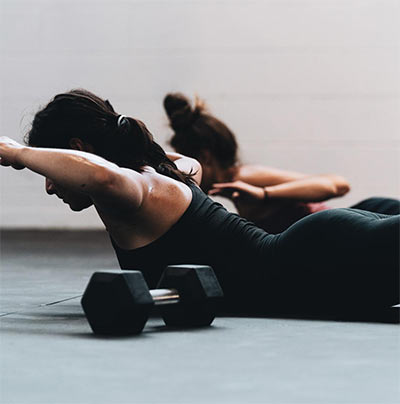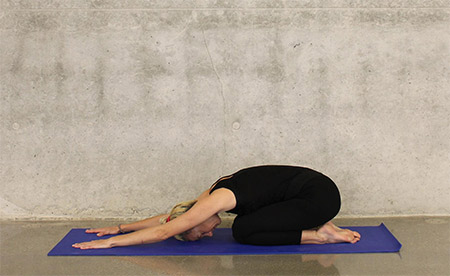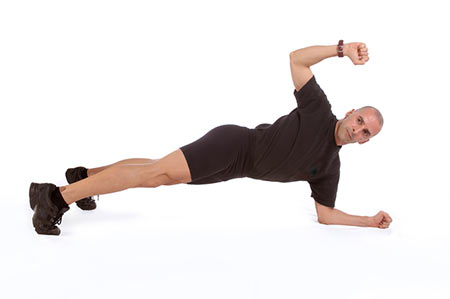
Posture is at the basis of good performance, good health, and a good quality of life.
Today, we’re discussing the importance of posture in the upper body: what should it look like? Why do you need it? How can you make it happen?
These are the key questions we’re going to address, and by the end of this article you’ll have all the tools you need to take care of your own posture.
Physical Characteristics/Context
Posture is talked about often, but the idea isn’t always made clear – and being unclear about it can easily make the issue unnecessarily complicated. It’s easy to spin half-truths on the internet without a clear definition of what you’re talking about; so let’s be clear!
Posture is the resting or habitual positions that your body sits in. Posture also tends to refer to the positions of a few key regions, in particular: the hips, spine, scapular, shoulders, and neck/head.
Basically, posture centres around the spine and the important joints around the hips/shoulders. This is important because it affects the most important and commonly-injured areas of the body, which we can start to avoid and fix with better posture.

What ‘Perfect’ Posture Looks Like
While there’s no such thing as perfect posture (we’re mostly looking to avoid problems and improve positions), we can definitely say what you should avoid, and where extreme positions need to be adjusted.
For that reason, what we call perfect posture isn’t glamorous or extreme – it’s just about balance:

The idea is to put your joints in the middle of their capsules and become comfortable with them for movement in any direction. Bad posture is defined by excess and extremes: good posture, on the other hand, is just about removing imbalance or poor positioning.
Standard Risks / Bad Habits and Their Relation to Injury
The reason we’re talking about posture is simple and precautious: excessive deviations from good posture tend to cause long-term issues.
We can look at a number of characteristic posture problems, which are more common because of the habits and positions of modern life – such as desk work or excessive sitting.
Seated Posture
Seated posture is one of the main areas where we see problems emerge in modern life. With the number of hours the average person spends sitting, several hours a day, it’s no surprise that posture is dramatically affected.
The positions of standard desk work look something like this:
A rounded upper back
A forward-head position
Slouched-forward shoulders
A lazy and poorly-stabilised lower-back
These are the common points we tend to find in the average person, the big population-level issues. They also match up with the areas that are most commonly painful: upper back deficiency, neck pain and tension headaches, impinged and limited shoulders, and the ever-present back pain.

On the other hand, manual work will not be better for posture just by being active: the repetitive movements aren’t always great for the posture, and excessive loading and repetition can easily add up to tightness, if not balanced against mobility and deliberate strength exercise.
Other Postural Devices – Inactivity
On the other hand, we have some serious issues with activity levels; being low-activity rapidly increases the risk of poor posture, which is obviously pretty common today.
Simply put, posture declines when we allow it to: movement through full ranges of motions doesn’t allow posture to break down over time. Equally, the loss of strength, endurance, and coordination that come with exercise or activity all add up to reduced resting posture.
This inactivity also produces poor control of the body, an extremely stubborn issue. This not only produces poor posture, but makes it harder to fix any problems with posture or movement, and will need deliberately fixing with proper physical preparation and smart exercise choices.
Let’s take a quick look at the issues we see off the back of posture, and how/why they occur…
Neck Pain
Starting at the top, neck pain is one of the most common and annoying musculoskeletal problems to deal with. It’s a form of tightness or limitation that crops up when you start looking in different directions, which gets old fast.
Forward head posture is one of the leading factors here, but it is also associated with neck tightness and trap over-activity. These are crucially important in establishing neck pain, limited movement, and even the onset of tension headaches originating in the upper back/neck muscles.

Avoiding/Fixing Neck Posture
Keeping the head back and in a healthy position is the result of proper mobility – and then making sure that you break any habits that produced the posture.
Regular daily mobility work in the neck/traps is absolutely crucial for keeping your neck and shoulders healthy. It’s a key movement for releasing the excessive tension that most of us carry in the shoulder girdle.
Fortunately, you can do this with very little time and in almost any location. There are two types of neck movements you should practice to help offset these issues: neck circles and neck rotations.
Aside from this, the idea is to keep your head stacked over your spine, which keeps the spine healthy, and keeps the muscles around the neck at healthy lengths.
Shoulder Joint Pain
Pain in the shoulder joints is one of the most common results of posture – both in ‘healthy’ people, as well as primarily in older people. These combine for common issues like frozen shoulders, impingements, and the interaction they carry with upper back pain.
Forward position of the shoulder, the rolling forwards of the joint, is a serious problem associated with reduced motion. This ‘forward binding’ of the shoulder joint is the kind of imbalance and poor resting-position we look at as the calling card of bad posture.
In fact, the duration of non-neutral posture in the shoulders can easily produce shoulder disorders: research tells us that it could take as little as an hour or two, depending on the position.

These are clear problems since most of us are likely to be holding these positions for significant amounts of time per day. These aren’t huge amounts of time when we look at positions like desk work and manual labour.
Shoulder Problems
We’ve already hinted at the main shoulder problems that are associated with poor shoulder posture: frozen shoulder, bursitis, and impingements. On top of this, bad posture can easily shift loading stress into the upper back, overcompensating for poor shoulder positioning.
It also makes exercise more difficult, placing excessive stress towards the front of the shoulder capsule, a problem that can easily cause pain across a number of common exercise-induced injuries.
The solution to poor posture is going to be the rotation of the shoulders back into the joint, which tends to require 2 changes; reducing the forward-demand from the muscles of the chest, as well improvements in the strength of the upper back muscles.
Movements like band pull-aparts, YTWs, and inverted rows are great ways of developing this strength. Postural stability exercises like a rear support position can also develop strength, mobility, and stability all at the same time.

You just need to open up the chest and shift your shoulder-control backwards towards a combination of shoulder and upper back musculature.
Scapular Pain and The Upper Back
It’s hard to separate out the combined postural effects of the upper spine and the scapular. These are the two defining structures in the upper back, and weakness or poor posture in one will almost always appear in the other.
Overcompensation is very common, and most people are struggling with poor posture in at least one of these important structures.

The scapula has a wide range of possible movements, and is closely related to how your upper back and shoulders move. These are wide-reaching enough that problems in the movement or posture of the scapula shows up in other areas.
The scapula is most commonly limited in its movement and/or winged; it can easily come away from the ribcage it is meant to stay close to, with good posture.
When it comes to fixing up the scapula, the idea is simply to develop the strength and stability in all directions of the scapula.
Movements like band pull aparts are great here, as well as swimmer’s holds, full-range lateral raises (such as Lu raises), and YTWs. These are light exercises which can be built on, afterwards, with movements like reverse flyes, inverted rows, and pull up variations.
T Spine
The upper spine is a common area where poor mobility and weakness are combined; it is an area where both are required, but seating posture and inactivity produce stiffness and weakness in the region.
This means a 2 step process is needed to improve the T spine and improve the posture and stability of the region.
First, establishing better T spine mobility is all about foam rolling some movement into the region, before practicing flexion/extension and rotation. This covers the main movements associated with the upper back.
Movements like side planks with a twist are also aimed at strengthening and stabilising these movements, and is one of the best exercises to build a healthy upper back and better posture.
Final Thoughts
Posture and habits show up in the upper body, as do the injuries and discomfort associated with ignoring them. The majority of upper body posture is about positions and habits, but strength and mobility will always be our go-to tools to start addressing structural problems.
The guide here is simple framework for fixing up major problems, but obviously doesn’t cover every possible problem, solution, or useful exercise. It’s a place to start and will offer you a guaranteed long-term improvement.
With the amount of time we all spend developing bad posture, don’t you think it’s time you put a little effort into fixing it?








